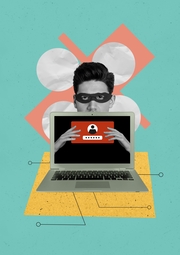Safety in Social Media: Beyond the Basics
A child should understand what being safe on social sites entails. It includes how to treat personal information, how to relate with others, how to ensure privacy, and how to identify safe and unsafe content. These are the basics of social media safety. We dare not them for granted, even if we have already taught our children these standard safety practices.
There are also extra layers of safety that a PIA can add is to enhance that security by hiding their IP address and encrypting what they do online. This ensures that any possible threat cannot target them and will help keep privacy at the best levels online. Still, that doesn’t mean kids should not be taught as much as possible about how to stay safe on any social media platform they may be using.
Social Media Safety: Next Level of Education
Beyond the basics, there is more advanced instruction that parents can teach their children. And it needs to evolve as children grow. As humans, we generally wish to trust others. And therein lies the potential for weakness to be exploited.
The Psychology of Oversharing:
The compulsion to overshare on social media platforms is often fueled by a complex interplay of psychological factors. The need for validation, fear of missing out (FOMO), and desire for connection drive individuals to disclose personal details and experiences online.
However, oversharing can have unintended consequences, ranging from privacy breaches and identity theft to reputational damage and emotional distress.
To strike a balance between authenticity and privacy, kids should be taught to cultivate self-awareness and mindfulness in our online interactions.
Before hitting “post:
- Consider the potential implications of sharing personal information, both for yourself and for your audience.
- Set boundaries for what you’re comfortable sharing and regularly review your privacy settings to ensure your digital footprint is protected.
- Engage in offline activities that fulfill your need for connection and validation, reducing reliance on social media as the primary outlet for self-expression.
By teaching a mindful approach to sharing online, kids can be taught to safeguard their privacy and well-being beyond privacy settings while still enjoying the benefits of social media connectivity.
Managing Your Digital Footprint
Teaching kids what a digital footprint entails is the key to them understanding that every action online as a result. Unwise discussions due to naïve thinking or an assumption of anonymity does not mean you haven’t left a digital trail. Explain that your guidance for managing one’s digital footprint is not just about protection today, but for potential harm in the future.
Cultivating a Mindful Online Presence
Instead of just focusing on privacy settings, emphasize the importance of mindfulness in online interactions. Teach them how to scrutinize messages that may contain malicious links. Phishing happens on social media as well, and malware can spread even within an app.
Mental Health and Social Media
Discuss the potential impact of social media on mental health and well-being. Provide strategies for maintaining a healthy relationship with social media, such as setting boundaries, curating a positive feed, and seeking support when needed.
The Rise of AI in the Wrong Hands
Predators and cybercriminals now have access to artificial intelligence to custom curate messages, voices, deepfake videos, and attacks that prey on our emotions. Teach your child how to safeguard against digital manipulation by never assuming what they are seeing or reading is legitimate, even if it comes from a friend.
Cyberbullying and Online Communication
Online, serious cyberbullying takes place. Teach your child how to recognize cyberbullying – be it through nasty comments, exclusion from groups, or threatening messages. From such behaviors online, you should not retaliate but rather save the evidence and talk to an adult to help you manage the situation.
With the rise of various parental control tools—including being a parent, you now have tools to control how your child uses social media. Parental control software like ClevGuard can block harmful content, enforce time restrictions on the use of social media, and help you supervise their engagements online without being too intrusive. These tools are not about restriction but to ensure your child eases into social media, with safety nets in place up to a time when they can handle more freedom.
Online Friendships and Interaction
Social media platforms such as Instagram can be ideal for children to keep up with their friends. Still, educating them on the set boundaries in their relationships online is important. Make them aware of the risks of online predators and their patterns, such as pretending to be somebody else to gain a child’s trust. They should be aware that they should never agree to meet in person with someone they spoke to online without talking to an adult first.
Making It Easier to Talk
Lastly, the greatest security feature of all is communication: let your child know they can come to you with any concerns or questions regarding their online experience. General updates on how they are using social media may keep you abreast of the situation and, at the same time, give them a chance to talk about any issue that troubles them.
ou need to be approachable and non-judgmental so that your child feels safe discussing their online life with you. This type of process aids your child in deriving the advantages of social media and bypassing many risks. It just ensures a balanced approach so that they feel supported and educated on how to work their way around the world of social media safely.
With these steps, you help your kid enjoy the benefits that come with the use of social media while mitigating most of its associated risks. It is all about balanced empowerment and education—giving them everything they need to be safe while on social media.
Read about the U.S. Surgeon General’s advisory on social media and youth mental health.




